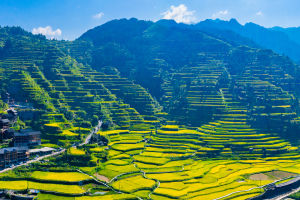Suspension bridges, engineering marvels that combine elegance and strength, have a rich history and continue to play a vital role in connecting people and places around the world.
In this article, we will delve into the world of suspension bridges, their design principles, notable examples, and the crucial role they play in modern transportation and infrastructure.
1. Engineering Elegance
Distinctive Design: Suspension bridges are known for their graceful and distinctive design.
They feature two main towers that support the bridge deck, which is suspended by cables.
Cable Mastery: The strength of suspension bridges lies in their firm steel cables, which distribute the load evenly and efficiently.
2. Historical Significance
Early Innovations: Suspension bridges have been around for centuries. The oldest known suspension bridge, the simple rope bridge, dates back to ancient civilizations.
Modern Advancements: The 19th and 20th centuries brought significant advancements in suspension bridge engineering, allowing longer spans and increased load-bearing capacities.
3. Key Components
Towers: The tall towers on either side of the bridge provide vertical support for the cables and bridge deck.
Cables: Strong steel cables serve as the vital core of suspension bridges, bearing the weight and evenly distributing it to the towers.
Anchorages: The cables are securely anchored to the ground on each end of the bridge.
Bridge Deck: The road or pathway that rests on the cables, providing a stable surface for vehicles and pedestrians.
4. Iconic Examples
Golden Gate Bridge, USA: One of the most famous suspension bridges globally, it spans the Golden Gate Strait in San Francisco.
Akashi Kaikyō Bridge, Japan: With the world's longest central span, this bridge connects the islands of Honshu and Awaji.
Brooklyn Bridge, USA: An iconic New York City landmark connecting Manhattan and Brooklyn.
Millau Viaduct, France: The tallest bridge in the world, it soars above the Tarn River in southern France.
5. Engineering Challenges
Designing and constructing suspension bridges is no small feat.
Engineers must consider factors like wind resistance, load-bearing capacity, and the effects of temperature changes.
6. Longest Spans
Akashi Kaikyō Bridge, Japan: With a central span of 1,991 meters (6,532 feet), it holds the record for the world's longest.
Xihoumen Bridge, China: The world's second-longest suspension bridge boasts a central span of 1,650 meters (5,413 feet).
7. Modern Applications
Transportation: Suspension bridges are crucial in connecting remote areas and facilitating the movement of people and goods.
Aesthetics: Their elegant design often makes suspension bridges landmarks and tourist attractions.
Adventure Tourism: Some suspension bridges have been adapted for adventure activities, like bungee jumping and ziplining.
8. Engineering Advancements
Cable Materials: Advances in materials science have led to stronger and more durable cables, enhancing the resilience of suspension bridges.
Computer Modeling: Engineers use sophisticated computer simulations to analyze the behavior of bridges under different conditions, improving safety and efficiency.
9. Challenges in Maintenance
Corrosion: Exposure to the elements can lead to cable corrosion, requiring regular inspection and maintenance.
Weather Conditions: Strong winds and temperature fluctuations can impact the structural integrity of suspension bridges.
10. Sustainable Design
Minimal Environmental Impact: The design of suspension bridges often minimizes their impact on the surrounding environment, making them a sustainable choice for transportation infrastructure.
In conclusion, suspension bridges are not only engineering marvels but also icons of connection and progress.
Bridging both physical and metaphorical gaps, they stand as powerful symbols of human ingenuity and unwavering determination.
From their rich history to modern applications and engineering advancements, suspension bridges continue to shape the way we connect and interact with the world around us.


